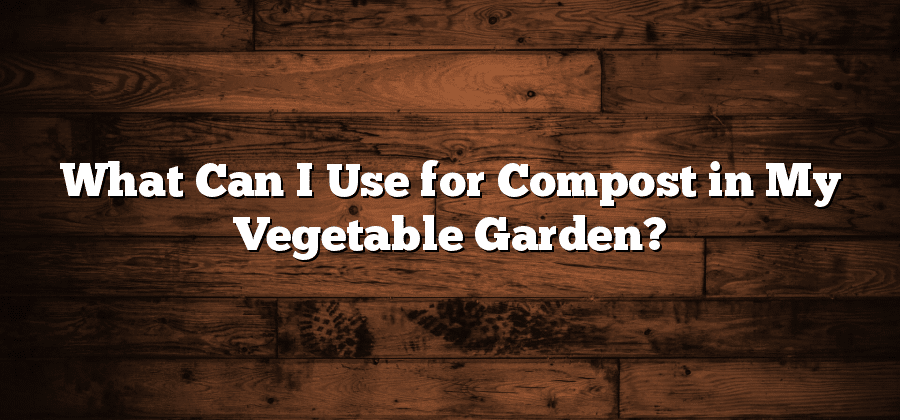Yard Waste: Incorporating grass clippings, leaves, and small branches.
In the world of composting, yard waste is often seen as a precious resource. Grass clippings, leaves, and small branches can all be incorporated into your compost pile, providing a valuable source of organic material.
Grass clippings are high in nitrogen, adding a good dose of greens to the mix. Be sure to spread them out in thin layers to prevent clumping and allow for proper aeration. Likewise, leaves are another excellent addition to your compost pile, contributing a rich source of carbon. Shred them before adding them to the pile to speed up decomposition. Lastly, small branches can also be included, but make sure to break them up into manageable pieces. This will aid in the decomposition process and prevent any large, woody chunks from interfering with the balance of your compost pile.
As you incorporate these yard waste materials into your compost pile, keep in mind that a good balance between greens and browns is crucial. Greens such as grass clippings provide nitrogen, while browns like leaves provide carbon. Aim for a ratio of roughly one part greens to three parts browns to create the ideal environment for decomposition. By harnessing the power of yard waste, you can turn what would have been discarded into a valuable resource for enriching your soil and promoting sustainable gardening practices.
Plant Waste: Recycling pruned branches, dead plants, and spent flowers.
The recycling of plant waste, including pruned branches, dead plants, and spent flowers, is an essential practice in maintaining the health and sustainability of our gardens. By incorporating these organic materials back into the soil, we not only reduce waste but also provide valuable nutrients to support the growth of new plants.
Pruned branches, when properly recycled, can be transformed into valuable mulch or compost. Chipping the branches and adding them to the compost pile helps break them down more quickly, creating a nutrient-rich soil amendment. Similarly, dead plants and spent flowers can be composted to provide organic matter that enhances soil structure and fertility. By recycling these plant wastes instead of discarding them, we minimize the need for chemical fertilizers and promote a more eco-friendly approach to gardening.
Manure: Utilizing well-rotted animal manure from herbivores, such as cows or horses.
Utilizing well-rotted animal manure from herbivores, such as cows or horses, can be an excellent addition to any compost pile. Manure is rich in nutrients and organic matter, making it a valuable resource for nourishing your plants and improving soil fertility. But why well-rotted manure?
Well-rotted manure has undergone a decomposition process that breaks down its organic compounds into a more stable form. This process eliminates any potential pathogens or weed seeds present in fresh manure, making it safe to use in gardens. Additionally, the decomposition process transforms the manure into a nutrient-rich substance that is easily absorbed by plants. This means that the nutrients in well-rotted manure are readily available to support healthy plant growth and development. By incorporating this valuable resource into your compost, you can provide your plants with the essential nutrients they need while also recycling organic waste in an environmentally friendly manner.
Straw and Hay: Adding straw and hay to provide structure and aeration to the compost.
Straw and hay are valuable additions to any composting process, as they offer essential structure and aeration. When added to the compost pile, their fibrous nature helps create air pockets, allowing for proper oxygen flow. This is crucial for the decomposition process, as microorganisms that break down organic matter require oxygen to thrive and carry out their work effectively.
Furthermore, straw and hay also provide structure to the compost, preventing it from becoming too compacted and promoting better moisture retention. This is especially important for composting materials that tend to clump together, such as kitchen scraps or grass clippings. By incorporating straw and hay into the mix, composters can ensure that the pile remains loose and well-aerated, facilitating the breakdown of materials and minimizing the risk of unpleasant odors or a slimy, anaerobic environment.
Wood Ash: Incorporating wood ash in moderation to provide potassium and raise pH levels.
When it comes to composting, wood ash can be a valuable addition in moderation. Wood ash is rich in potassium, providing an important nutrient for plants. Additionally, it can help raise pH levels in acidic soil, creating a more balanced environment for plant growth.
However, it is important to use wood ash in moderation. Excessive amounts can disrupt the delicate balance of nutrients in the compost pile, potentially leading to nutrient imbalances in the resulting compost. It is recommended to sprinkle a thin layer of wood ash over the compost pile to ensure an even distribution and avoid clumping.
In conclusion, incorporating wood ash into compost can be beneficial for its potassium content and pH-raising properties. However, it is crucial to use it sparingly to maintain a balanced nutrient composition. By following these guidelines, gardeners can maximize the benefits of wood ash for their plants and ensure optimal composting results.






